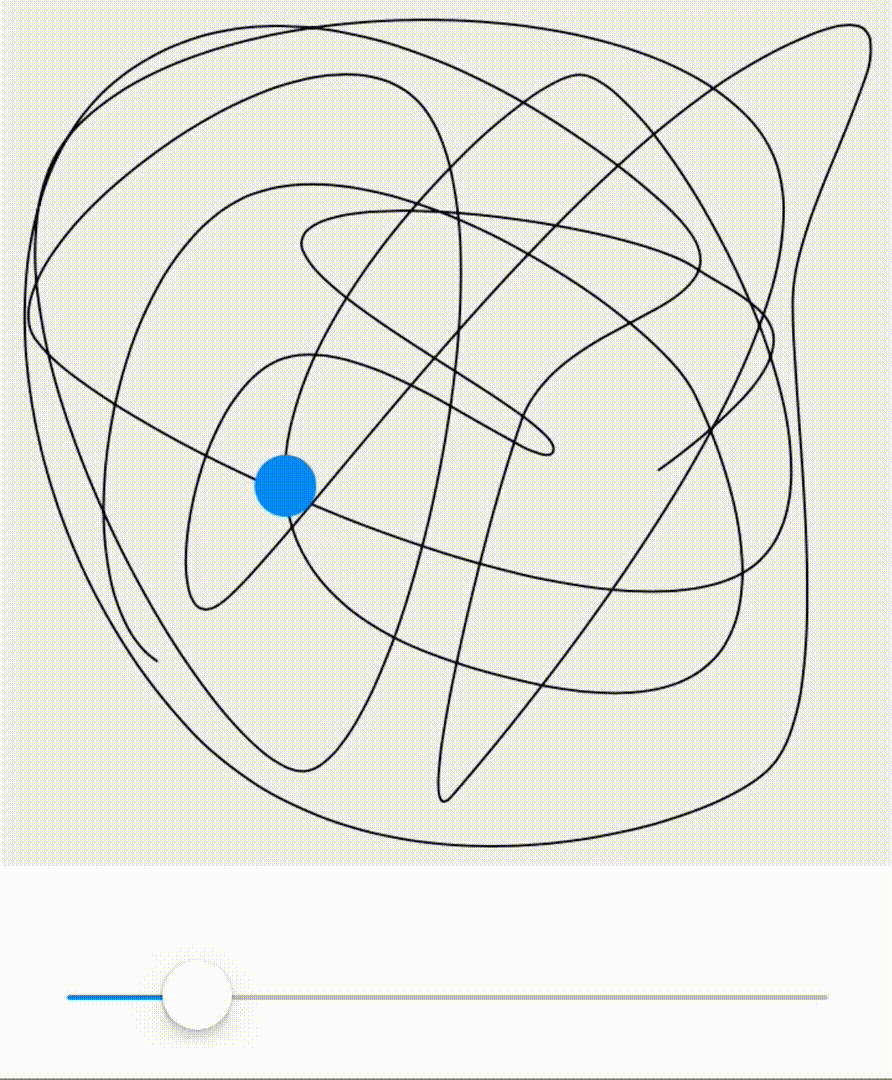A one-file extension library to add several cool features to UIBezierPath.
This library consists of one single file. Gettings started is as easy as copying this file to your Xcode project.
Developed with Xcode 9 and Swift 4. Tested with Swift 3+. Works with Xcode 8 with some minor adjustments.
Xcode 8+
Swift 3+
iOS 8+
Copy UIBezierPath+Superpowers.swift to your project and you're good to go.
The repo includes a demo project which lets you try out the features with different predefined paths.
Feel free to add your own svg files and extend the Demo enum respectively.
Note: The demo project was created with Xcode 9 and works with iOS9+.
This library adds several major features to UIBezierPath.
var mx_length: CGFloat
Returns the length of the path.
mx_point(atFractionOfLength: CGFloat) -> CGPoint
Returns for a given fraction the point on the path fraction * pathLength in to the path.
mx_perpendicularPoint(for: CGPoint) -> CGPoint
Returns the closest point on the path to a given CGPoint, effectively letting fall a perpendicular on the path from point and returning the point of intersection.
mx_tangentAngle(atFractionOfLength: CGFloat) -> CGFloat
For a given fraction, returns the tangent angle of the path at the point fraction * length in to the path.
The backbone of it all is a function on CGPath called apply(info:, function:). This basically lets you iterate
all elements a given UIBezierPath is constructed of.
UIBezierPath and its Cocoa counterpart NSBezierPath are descriptions of bezier curves.
These curves are basically a clever way of feeding line drawing instructions to computers.
Bezier paths are composed of different types of path elements. Each element is either a straight line, quadratic curve or cubic
curve. At the end of the day, these curves boil down to mathematical functions which allows us to calculate things like
line lengths, tangent angles, etc.
If you are interested in more, there is a really well written and easy to understand article on Wikipedia.
What this library does is pull out all elements a path is constructed of and throw some geometric math at them. Since the extraction and initial computations are quite expensive, the results are cached internally if possible.
By default however, caching is disabled because - by design - the library lives in an extension and not a subclass of UIBezierPath and with that come some limitations regarding method overriding, internal vars, etc.
In order to enable the full superpower, you'll have to call UIBezierPath.mx_prepare(). This performs some runtime magic
under the hood which breaks the chains of extension and gives you full access to all features on any UIBezierPath object.
Feel free to build upon this project and / or submit a PR anytime.
- Maximilian Kraus
This project is licensed under the MIT License - see the LICENSE.md file for details



